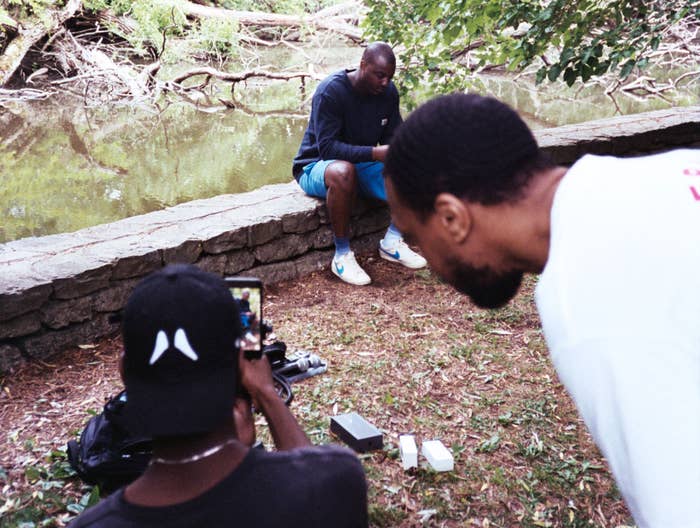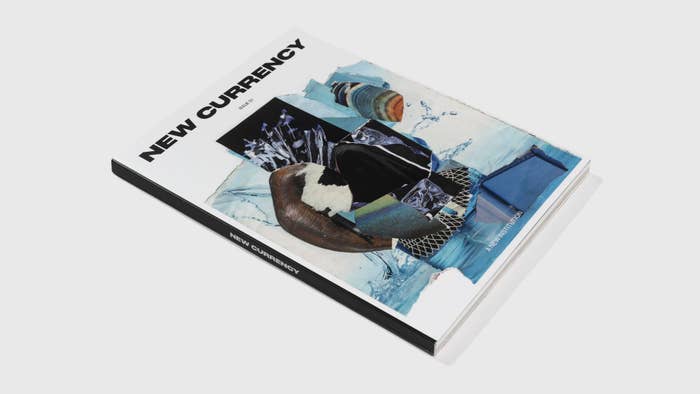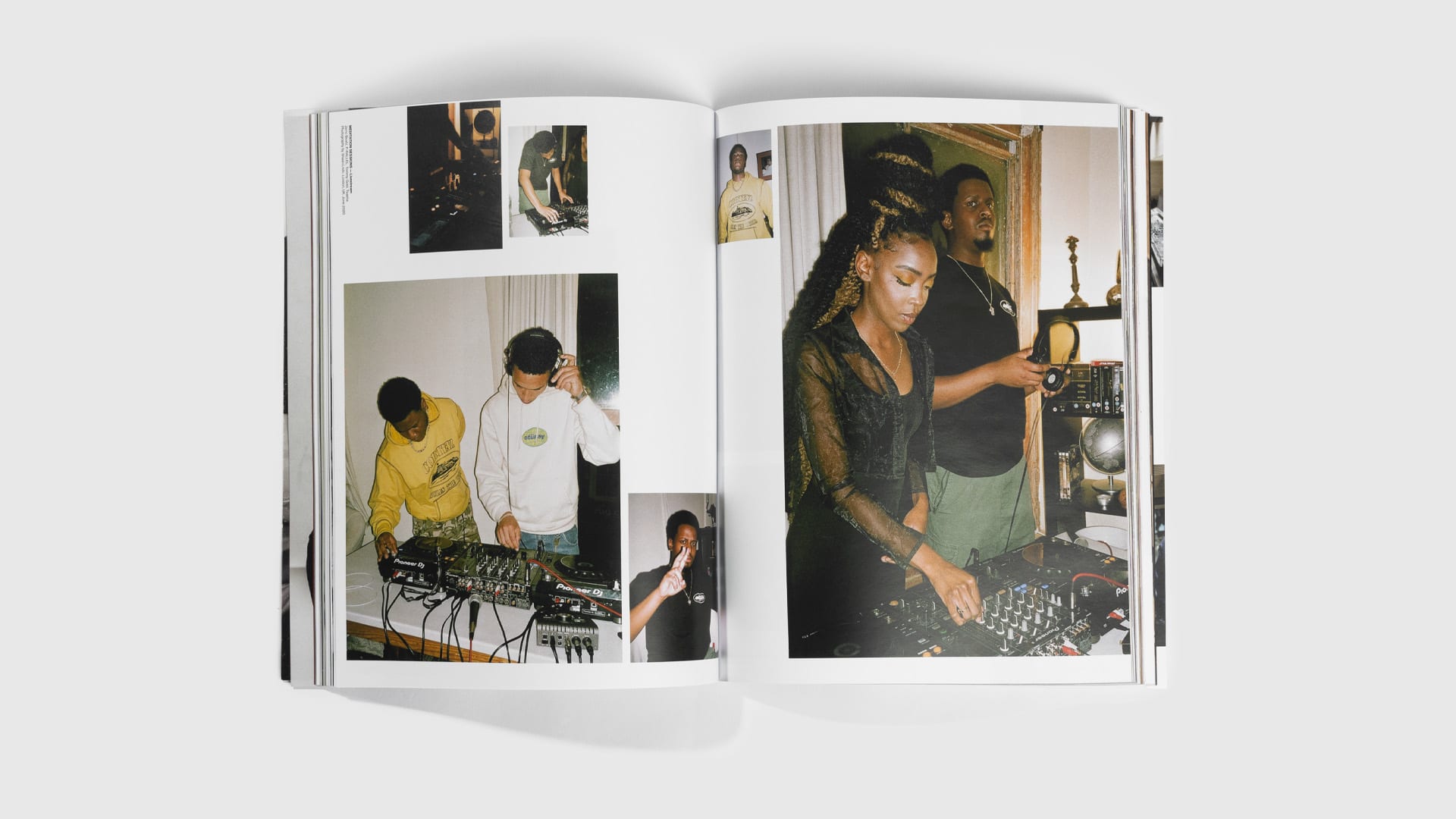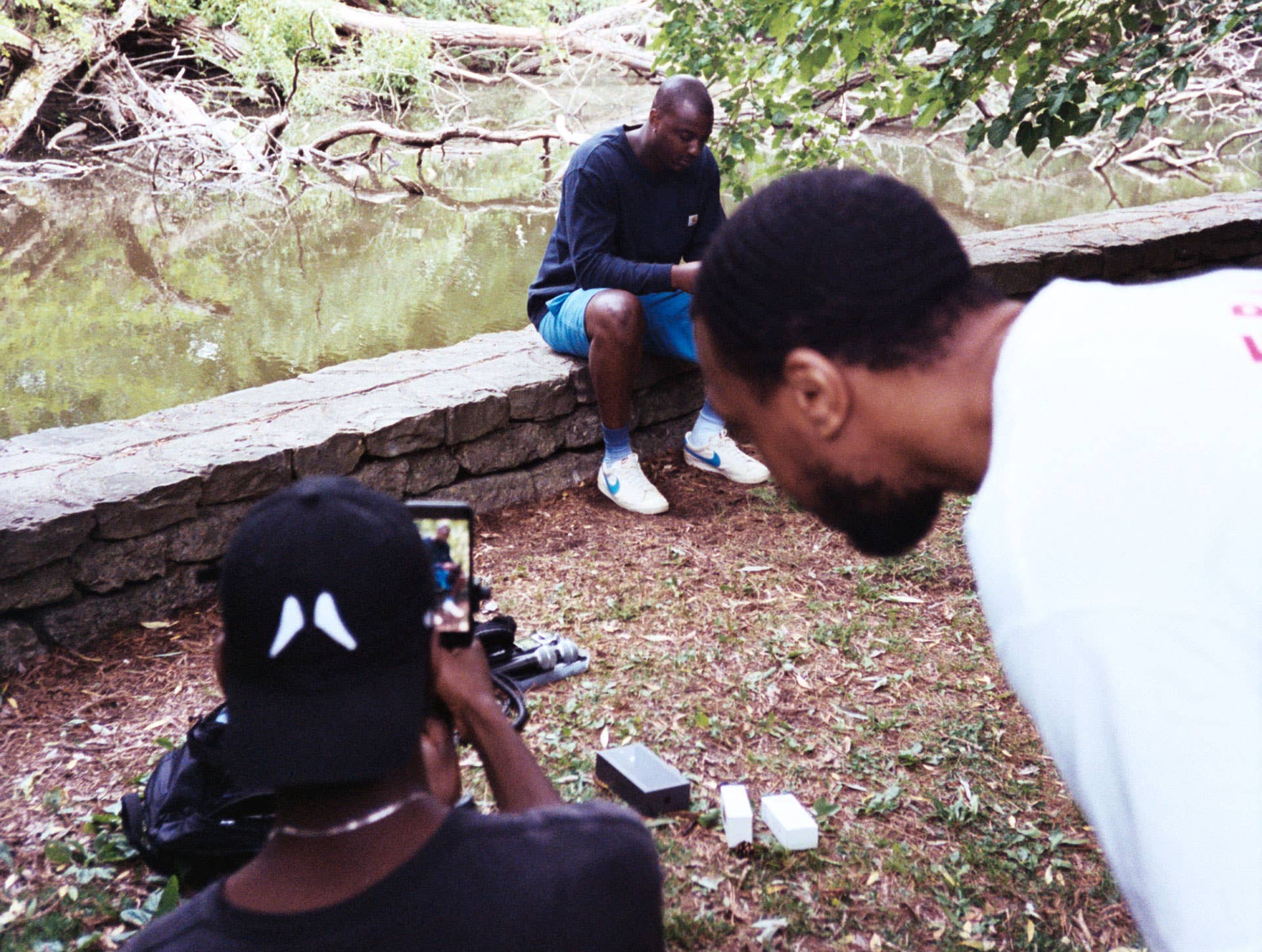
Culture and vibes. If Kazeem Kuteyi had a catchphrase, this would be it. It’s been sort of a running joke between him and his friends for years—a phrase fit for many occasions but most importantly, just something fun to yell at each other across the crowded dancefloors of yore. But beyond the ribbing, there’s not really a better description of what’s important to Kuteyi, the creative director of arts collective and “global youth platform” New Currency, and the circles he runs in. Culture: the art, social conventions and customs, institutions, and intellectual achievements of a group of people. Vibes: the intangible—yet unmistakable—emotional and energetic atmosphere of an experience.
New Currency has been documenting the culture and vibes around the world since 2015 in the form of editorial content, podcasts and radio shows, and photos. They’ve curated experiences such as panel discussions and parties in global cities like London and Paris, collaborating with such noted culture purveyors as Hotel Radio Paris and Yeti Out along the way. And now they are launching their most ambitious project to date: a 200-plus page magazine, filled with stories and photos of the global community they’ve been cultivating over the past six years. It’s a project that Kuteyi documented through Instagram and Twitter, giving his audience a glimpse into the process, trials and tribulations of producing a piece of physical media during a pandemic—a time when everyone was focused on going digital—all while keeping the actual contents a secret.
New Currency Issue 01: A New Institution is available for pre-order now. Here we get an exclusive look inside the pages, as well as hear from Kuteyi about bringing this labour of love (and vibes) to life.

The word “magazine” derives from the Arabic word makhazin, the plural of makhzan meaning “storehouse.” So at its root, the word “magazine” refers to a collection or a storage device/facility. Can you reflect on this idea as it relates to New Currency and your output?
I think about the image that opens the magazine after my editor’s note. It’s an image of my friend Bambii, a DJ and producer, standing in front of her billboard at Dundas Square. That’s a moment that I’m sure means a lot to her, but it is also very significant for people that look like me. If we say we’re about documenting youth culture in Toronto and around the world, we have the responsibility to make sure that those moments are preserved. That image of Bambii—it belongs in a museum but the institutions that exist now don’t understand that, so that’s where we come and we use this magazine, this object, and what we call the new institution, as a way to crystallize those moments. If you look at the placement of the image, you realize the left page is empty. The left page being empty emphasizes the importance of that image.
COVID-19 has been a trend accelerator in a lot of areas. I know the magazine was an idea that you have had for some time, but why in 2020 did you decide it couldn’t wait any longer. Did the pandemic have anything to do with it?
Of course! Here we are with time on our hands and it allowed us to reflect, and we started taking inventory of what we had done and questioning why something like New Currency needs to exist. Everyone was pivoting to digital events but at the core what makes New Currency special is that we make connections offline and then share them online. So the pandemic had us flipping around the model by meeting people digitally and then presenting these connections we made in a physical format. But we were also very interested in the shifts in thinking that were happening. We felt the magazine had to be something you had to serve a physical reminder of those movements, and we hope that the conversations and artworks presented there serve as a catalyst for anyone looking to think differently.

What were some of the specific challenges or roadblocks with creating this magazine that you could have never anticipated?
The biggest challenge was working around all the lockdown restrictions. We were working with different contributors around the world, so that was crazy—every country was different. There were a couple shoots that we had to cancel because of people being in close proximity with a positive case. Also it’s hard to sell someone on an idea they can’t see, so you think a story will happen but at the last minute they change their mind. I think this is where emotional intelligence comes in. I was very aware of the fact that we’re living in, as they like to say, “unprecedented times,” and people’s emotions are up and down. There were days where I was like, “Why am I putting myself through this pain?” I had to practice patience. It’s also our first time putting something like this together, so there were new processes I had to learn. The designer, Egor Sokolov, is the real MVP here because he was playing many roles at the same time. I learnt so much about type, design, and layout but also important processes that need to be implemented to make the second issue easier.

How are you feeling about the potential of arts and culture in Toronto (and Canada as a whole) in a post-COVID world? What do you feel cautious about, and what do you feel optimistic about?
Everyday my optimism changes. So I guess today, it’s very low. I don’t think Canada really cares about the arts and culture sector. Music spaces are closing, heritage spots are being torn down and someone like Khaleel Seivwright, who is building tiny shelters for the homeless, is being sued by the city. It’s a madness! Arts and culture is for the people and if the basic needs of the people are not being met, what do they care about arts and culture? What I am optimistic about is the potential of creatives that are making things without nothing, the ones who still push through regardless of the infrastructure. I’m really privileged to be in direct contact with a lot of amazing artists in the city. To hear their thoughts and see their works in progress makes me very optimistic of what could potentially come in the future.

